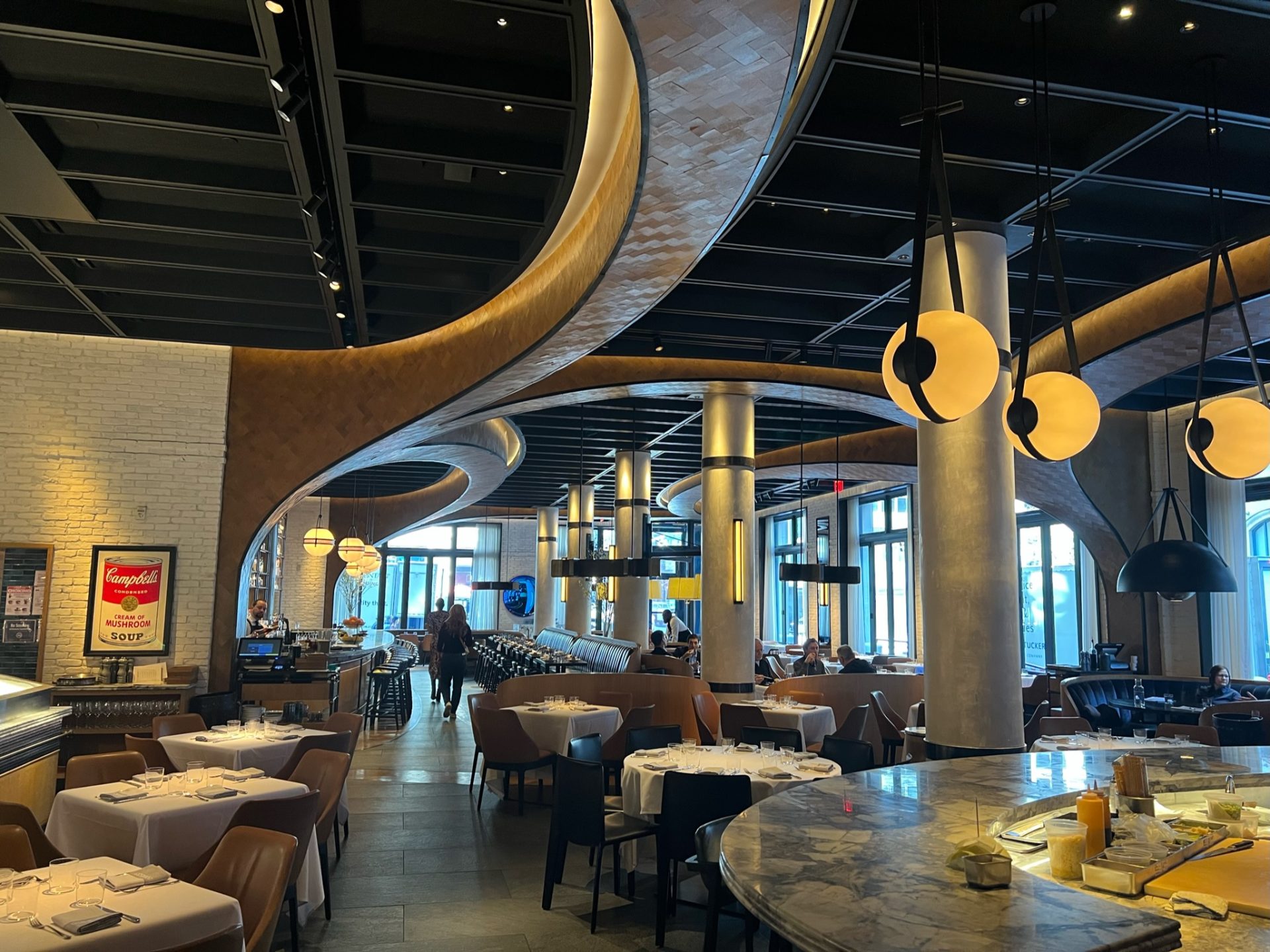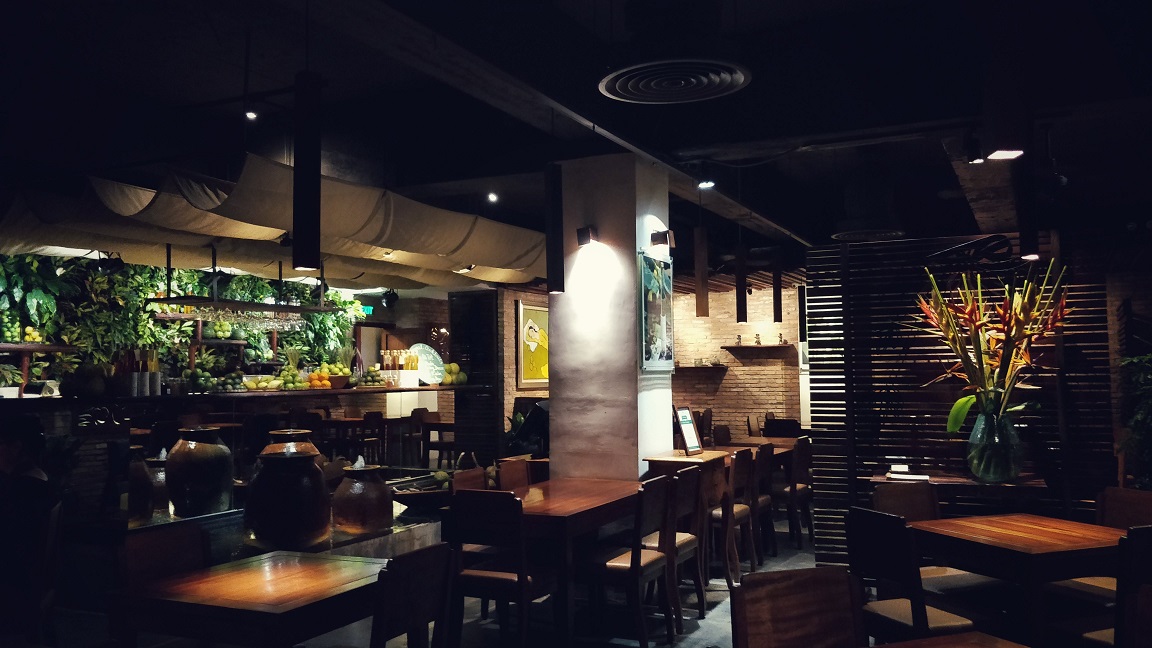Asian Fusion Restaurant: An Unique Dining Experience in the Heart of Islamabad
Asian Fusion Restaurant: An Unique Dining Experience in the Heart of Islamabad
Blog Article
Savor Authentic Asian Food With a Pan-Asian Twist for a Cooking Journey
Embarking on a culinary journey with authentic Asian cuisine, improved with a Pan-Asian twist, offers an unique opportunity to explore the rich tapestry of flavors that specify the region's varied cooking practices. As you consider these luring recipes, take into consideration the cultural stories and historical influences that form them, each bite supplying a story waiting to be found. best asian restaurant Islamabad.

Discovering Pan-Asian Tastes
In the realm of international gastronomy, Pan-Asian food sticks out for its exceptional variety and the harmonious interplay of tastes from various Oriental cultures. This cooking strategy commemorates the rich traditions and distinct active ingredients located across the continent, creating a tapestry of preferences that is both gratifying and intriguing. Key to Pan-Asian cuisine is its capability to stabilize different tastes-- wonderful, salted, spicy, and sour-- while highlighting the quality and high quality of each ingredient.
From the umami-rich soy sauce of Japan to the intense chili peppers of Thailand, Pan-Asian cuisine provides a substantial palette of flavors. These components are typically combined in inventive ways, improving meals with layers of intricacy. For example, making use of fragrant natural herbs such as lemongrass and cilantro, typical in Vietnamese and Thai cuisine, includes a revitalizing brightness to dishes, while the incorporation of coconut milk supplies a creamy, abundant structure.
The focus on fresh produce and aromatic spices ensures that each meal is not just a feast for the palate however also for the senses. Pan-Asian cuisine invites diners to start a culinary journey, exploring the huge and differed landscapes of Eastern gastronomy with every bite.
Combination Dishes to Try
While Pan-Asian cuisine is commemorated for its conventional flavors, the modern culinary landscape is increasingly accepting blend recipes that mix these timeless elements with influences from other areas. This cutting-edge method not just honors the rich heritage of Asian cooking arts however also presents novel preference experiences that interest contemporary tastes buds.
An archetype of such a blend meal is the Korean-Mexican taco, where seasoned bulgogi beef is wrapped in a warm tortilla, topped with kimchi and a hot gochujang-infused salsa. This mix marries the bold, mouthwatering flavors of Korea with the lively, fresh components of Mexican food. In a similar way, sushi burritos have acquired popularity, joining together the fragile artistry of Japanese sushi with the passionate, hand-held ease of a burrito, typically including blend ingredients like tempura shrimp and avocado with a drizzle of wasabi mayo.
An additional noteworthy dish is Thai curry ramen, which instills the luscious, fragrant spices of Thai curry right into the comforting broth of traditional Japanese ramen, creating a harmonious mix that entices the detects. These combination recipes prolong beyond mere novelty; they represent a cooking dialogue between societies, urging expedition and development in the globe of Pan-Asian food.
Necessary Components and Flavors
To genuinely value Pan-Asian food, one have to recognize the necessary components and spices that form its structure. This varied cooking style attracts from a rich tapestry of Eastern practices, utilizing a harmonious mix of textures and tastes.
Fragrant elements are critical, with garlic, ginger, and lemongrass being common across numerous Pan-Asian dishes. These active ingredients provide an aromatic base that enhances the intricacy of flavors. Spices such as celebrity anise, cardamom, and cinnamon present heat and personality, echoing impacts from regions like China and India.

Food Preparation Methods and Tips
Understanding the art of Pan-Asian food needs experience with its distinctive food preparation strategies, each adding to the vivid tapestry of tastes this cooking custom is commemorated for. Central to these techniques is the stir-fry, a fast cooking technique that maintains the dietary honesty and dazzling shades of active ingredients. Using a frying pan, the stir-fry technique enables for even heat distribution, necessary for achieving the characteristic texture and flavor balance of Pan-Asian recipes.
Another essential method is steaming, especially widespread in Chinese cuisine. This gentle technique preserves the natural tastes and nutrients of active ingredients, making it perfect for fish and shellfish and veggies. Dumplings, a cherished staple, commonly benefit from steaming, resulting in soft, delicious appearances.
Barbecuing, also integral, gives great smoky depths to recipes such as Korean bulgogi or Japanese yakitori (asian restaurant isb). This strategy typically entails seasoning components, permitting flavors to pass through deeply before food preparation over an open flame or warm plate
Lastly, understanding the art of balancing flavors-- wonderful, sour, salted, bitter, and umami-- is vital. Correctly layering these aspects can elevate a recipe from regular to phenomenal, using a facility and satisfying cooking experience that embodies the significance of Pan-Asian cuisine.
Dining Experiences Worldwide
Throughout the globe, Pan-Asian cuisine supplies an exceptional eating experience, commemorated for its rich tapestry of tastes and dynamic discussions. This culinary phenomenon has gone beyond cultural borders, catching the hearts and palates of food fanatics worldwide. In cosmopolitan cities like New York, London, and Sydney, Pan-Asian dining establishments work as fusions where culinary customs from Thailand, Japan, China, and past merge, providing diners with a diverse mix of dishes that highlight the region's diversity.
The worldwide appeal of Pan-Asian cuisine depends on its capacity to provide both credibility and technology. Cooks masterfully marry conventional active ingredients such as lemongrass, pan asian dining Islamabad soy sauce, and miso with modern methods, leading to meals that are both refreshingly new and acquainted. This blend enables diners to start a cooking trip that values heritage while accepting modernity.
Additionally, dining experiences are raised via thoughtfully developed environments that reflect the principles of Pan-Asian aesthetics. From minimal Japanese-inspired insides to dynamic Thai-themed spaces, each dining establishment uses an one-of-a-kind setting that matches the culinary offerings. Because of this, customers are not simply eating a meal yet partaking in a cultural experience, making Pan-Asian eating a truly international phenomenon.
Verdict
The exploration of Pan-Asian food offers an extensive understanding of the complex interaction of tastes and culinary customs throughout Asia. By welcoming fusion recipes such as Thai curry ramen and sushi burritos, the cooking trip not only highlights the flexibility of standard components however additionally showcases ingenious modern-day methods. This gastronomic journey, improved by cooking methods and necessary spices, gives a special opportunity to appreciate the multiculturalism and culinary virtuosity that define Pan-Asian cuisine on an international scale.
Getting started on a culinary trip via authentic Oriental food, improved with a Pan-Asian spin, provides a special possibility to explore the abundant tapestry of flavors that define the region's varied cooking traditions.In the realm of worldwide gastronomy, Pan-Asian food stands out for its amazing diversity and the unified interplay of flavors from different Asian cultures. Key to Pan-Asian food is its ability to balance different tastes-- sweet, salty, spicy, and sour-- while highlighting the quality and quality of each active ingredient.

Report this page